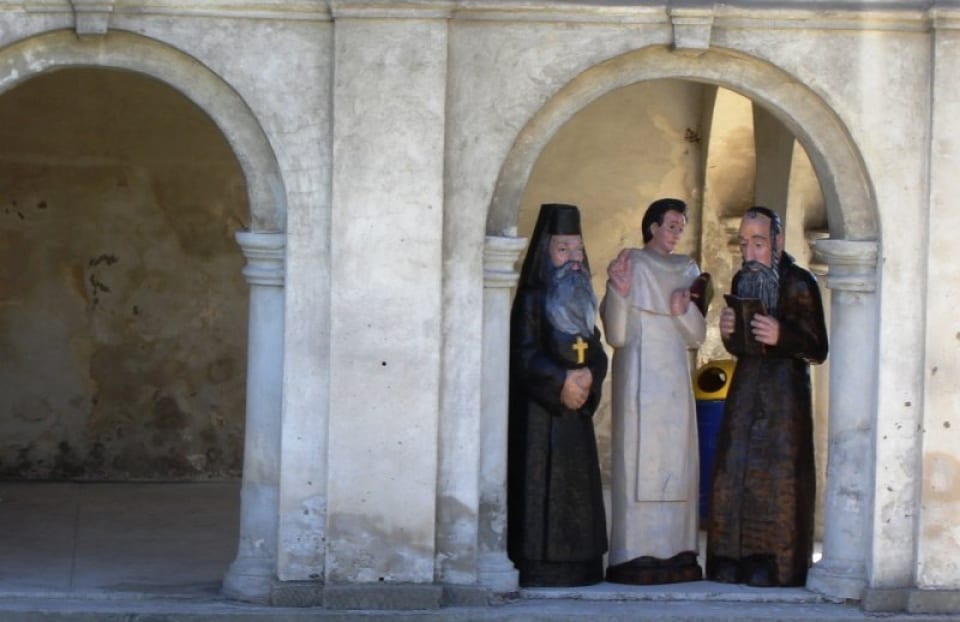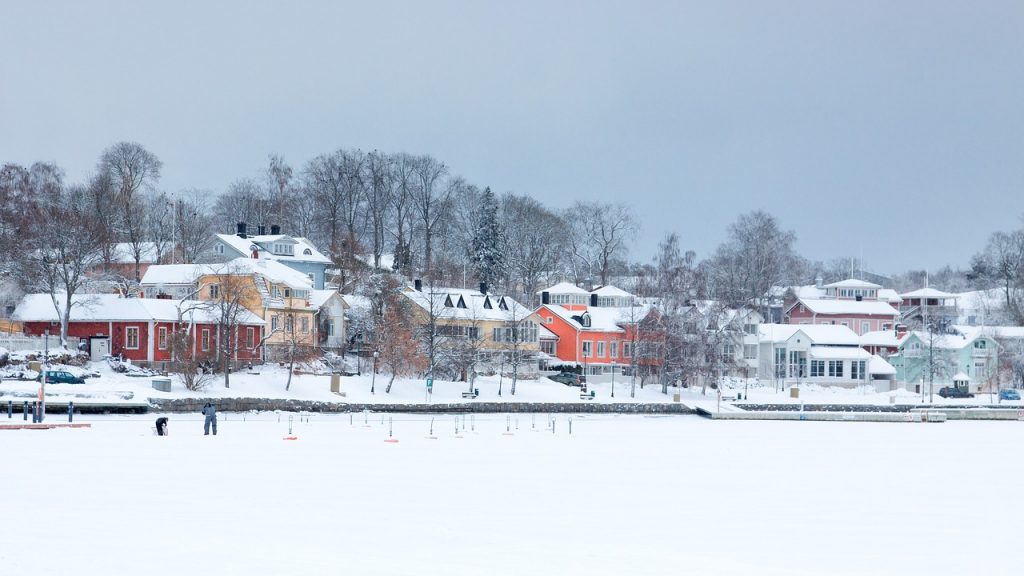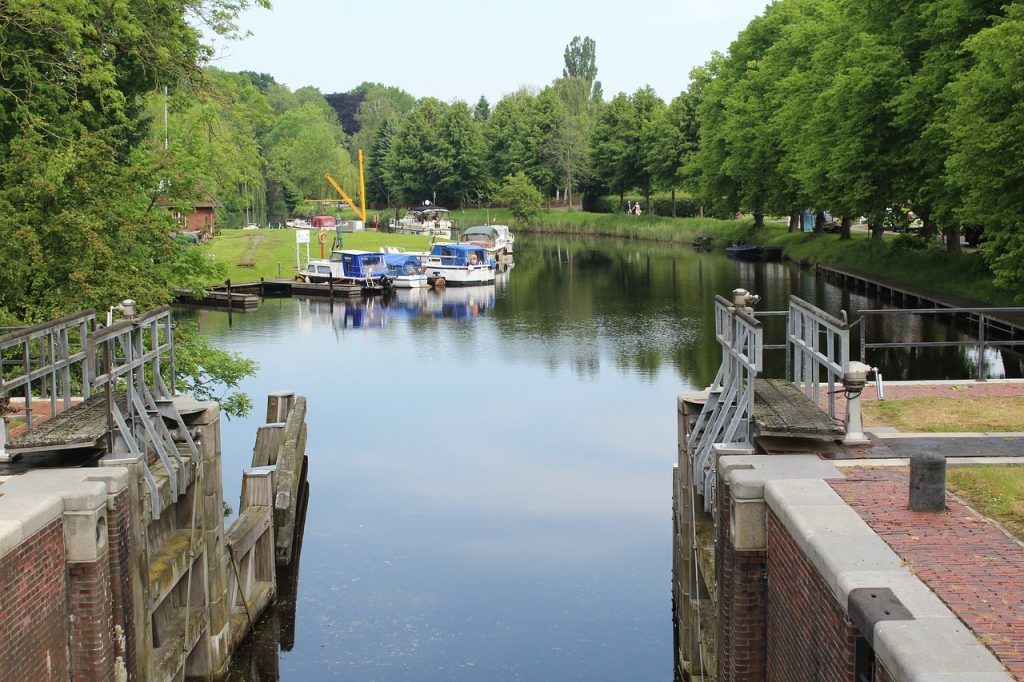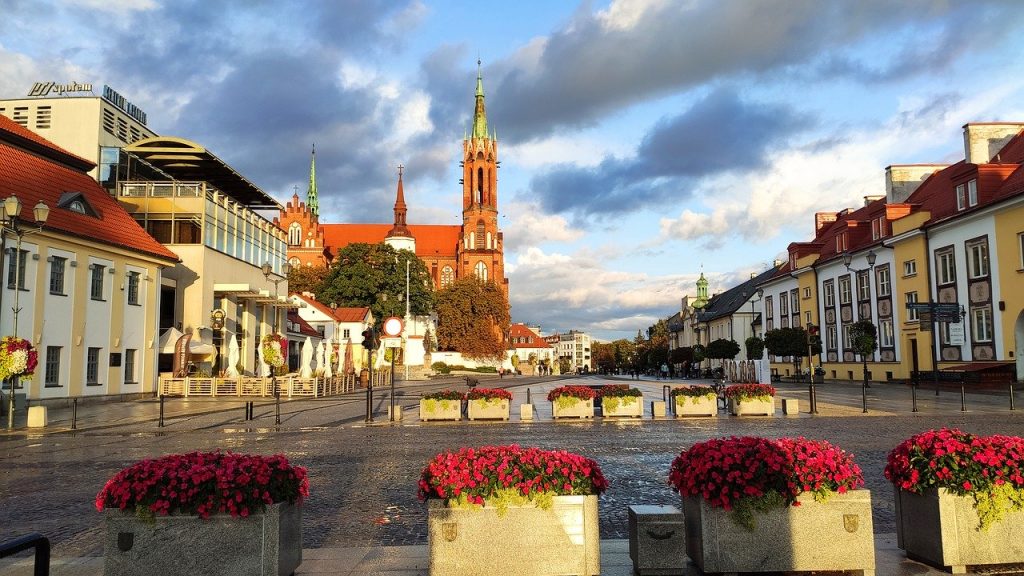Włodawa is a city of three cultures. There is a church, a church and a synagogue.
Włodawa is a poviat town, located on the Włodawa Hump, in the place where the Włodawka River flows into the Bug River. From the east, the border of Włodawa is the border of the Polish State on the Bug.

HISTORY
The origins of Włodawa are unknown. In the early Middle Ages there was probably a stronghold here, belonging to the network of the Redskin Castle. For the first time Włodawa is remembered by the Russian chronicler in the Halych-Volyn Chronicle because of the stay here of the tzar Daniel, who came here with his son after the Tatar invasion in 1241. In the years 1446–1447 the border areas with Włodawa were included in the Grand Duchy of Lithuania , and the border between the Crown and Lithuania ran in this area along the Włodawka River. The fate of the settlement decided the events of the year 1475. In that year, princes Michał and Aleksander Sanguszko took over Włodawa estate by way of exchange with King Kazimierz Jagiellończyk. Since then, Włodawa became the seat of the Sanguszków family for over a hundred years. Next to the stronghold in Włodawa, the Sanguszko built a wooden castle and took care of the economic development of the settlement. In the 16th century, Prince Sanguszko became the owner of the Włodawa estate, thanks to which Włodawa received civic rights around 1534, confirmed in 1540. It became a competitive center for Włodawka Orchowa on the other side, which belonged to the Krupski family. Jews who came to the city and settled in it activated trade and rafting of goods along the Bug and Vistula rivers. The 16th century favored the development of the city. At the end of the 16th century, Andrzej Leszczyński, Brest-Kuyavian voivode and Protestant became the owner of Włodawa. Włodawa soon became a strong center of Protestantism. The Leszczyński governments were conducive to the dynamic development of the city. The infidels who settled here from Bohemia, Moravia and Silesia, who contributed to the intensive development of crafts. Defeats fell on Włodawa in the 17th century, when it was destroyed by the Cossack-Tatar army of Bohdan Chmielnicki and Tuchaj-Beja, and later by the Swedes. In the 17th century, Włodawa estate was taken over by Rafał Leszczyński, father of the later Polish king Stanisław Leszczyński. As an ardent Catholic, he closed down the Calvinist church and school, and erected new facilities. In debt, he sold Włoda to the owner of the neighboring Różanka, Ludwik Konstanty Pociej. Pociej brought the Paulines to Włodawa from the Jasna Góra monastery, built a monastery for them, promised to build a magnificent temple. His plans were interrupted by wars. The successor of Ludwik Konstanty, Antoni Pociej, due to huge debts, was forced to sell Włodawa to the Lithuanian Treasury, Jerzy Flemming, who was a wealthy man and a good host. Through the marriage of his daughter Izabela with prince Adam Czartoryski, Włodawa passed into the hands of the Czartoryski and then the Zamoyski family. The fall of the Polish-Lithuanian Commonwealth closed the development perspectives of this Bug River city. In the mid-nineteenth century, it ceased to be a private city, it became the property of the tsarist government.
Currently Włodawa has about 15,000 inhabitants. It is the seat of the poviat, municipal and Włodawa commune authorities. Włodawa’s multinational, multi-faith and multicultural past has a huge impact on the shape of the current cultural life of the city and the region.
WORTH SEEING:
Church St. Ludwik erected in 1739–1780 from the foundation of Ludwik and Antoni Pociej, Fleming and Czartoryski, according to the design of the architect Paweł Fontana. Under the temple are the burial vaults of monks, Antoni Pocieja and the last owners of the city – the Zamoyski family. The interior of the church is decorated with late-Baroque polychrome from the 17th century, considered to be the work of Pauline painters: brothers Antoni and Wojciech Dobrzaniecki from Jasna Góra and Gabriel Sławiński. The polychrome made using the al fresco technique presents, among others: a series of scenes from the life of St. Louis, scenes from the New Testament, illusionist altars and the dome and other architectural elements of the main altar, there is a picture of Our Lady of Częstochowa, in a silver dress.
Monastery St. Paul – built in 1711–1717 according to the design of the architect Józef Piola. On the facade there is a plaque commemorating the founder Ludwik Pociej. Near the monastery is a farm building (monastery kitchen) built on the edge of the Bug River Escarpment in the middle of 18th century. This late Baroque stone, basement building was converted into flats after the dissolution of the order in 1864. On the outside of the church fence there is a statue of St. John of Nepomuk from the 18th century
Orthodox church of Nativity of the Blessed Virgin Mary – built in the years 1893-95–1842 in the Byzantine-Classicist style, on the plan of a Greek cross with a tower and three apses. Inside there is a classicist polychrome from 1842 and an iconostasis from 1843 with icons of the 17th and 18th centuries. The church is located on the edge of the Bug River Escarpment.
The synagogue complex: Great Synagogue, Little Synagogue, Pokahalny House. Currently, the Museum of the Łeczyń-Włodawskie Lake District.
- THE GREAT SYNAGOGUE built in the late Baroque style, on the site of a wooden temple in 1764–1774, partly from the Czartoryski foundation. It is a rectangular structure, with a square men’s room with two one-story women’s galleries along its sides. In the front corners there is a pair of bunk alcoves and a rectangular vestibule between them. The only preserved element of the men’s room is a neo-baroque, stucco-made and richly polychrome altar wardrobe (Aron Kodesh) from 1936.
- LITTLE SYNAGOGUE built at the end of the 18th century. It served two purposes, it was a house of prayer, as well as a place of study of the Torah and religious books. The wall paintings of the men’s room from the 1930s present animal figures, instruments, zodiac signs, as well as texts of prayers and psalms. From the original equipment of the House of Prayer, only wooden frames of Talmudic book cabinets have been preserved. The altar and bimah wardrobe were destroyed.
- POKAHAL HOUSE from 1928 built by Mordechaj-Motl Bigman. The building served the administrative function of the Jewish community, it housed a Jewish library.
Quadrangle – a unique example of stalls and butcher houses from the Baroque period located in the center of the market. Built on a square plan, with a spacious inner courtyard, to which two entrance gates lead.
Water gauge on the Bug – in Włodawa the water level on the Bug is measured on the Polish Radio. Everyone can read the water level and go to the Tourist Information Point on ul. Market 4, where he will receive a certificate confirming the measurement.
The article comes from the portal: http://www.turystyka-pojezierze.pl/


